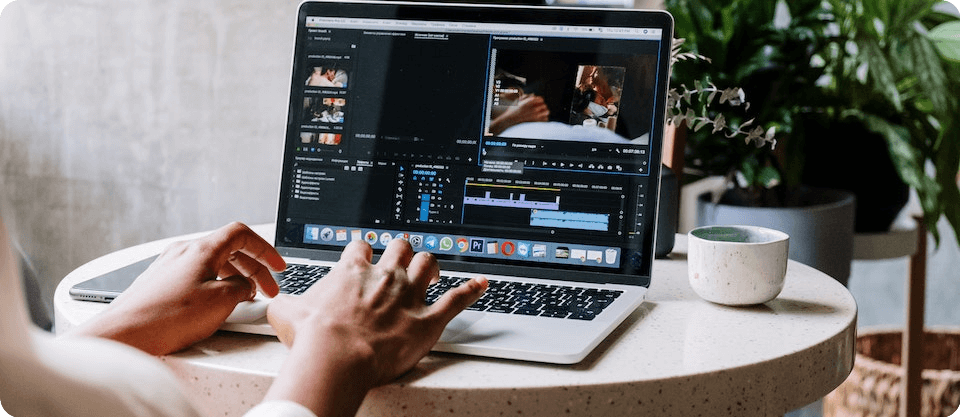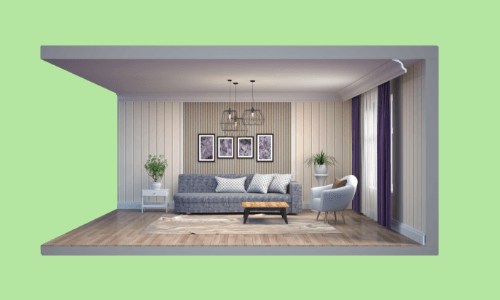
How to Improve Graphic Design Skills As a Beginner
What is graphic design?
Graphic design is a form of visual communication. This means that a graphic designer uses visuals consisting of illustrations, text, and photographs to communicate with a target audience through visuals.
Graphic design needs to communicate effectively. This means that if the design you created using all the elements (photography, illustrations, and text) does not communicate effectively, irrespective of how interesting or aesthetically pleasing it may seem, your task as a designer is not done. Graphic designers are creative problem solvers.
Graphic design is so much more than simply being artistic. Graphic design is there to make our everyday lives more convenient and hassle-free without us realising it. Consider the use of a very simple traffic icon. Its purpose is to direct you as quickly as possible. These icons are even universal, meaning that almost anyone, irrespective of their language or cultural background, will be able to understand these icons.
Imagine how the world would function without the use of visual communication. Having the ability to understand visual communication helps us navigate through life daily.
What do you need to become a graphic designer?
To become a graphic designer, there are a variety of courses available, and each course varies in length from a few weeks to a few months, and even a few years depending on what is included in the course.
Consider courses which include graphic design, communication design, art and design, and illustration in their course content to obtain a variety of skills.
Once you have enrolled in a graphic design course, and you have the basic skills and knowledge, begin freelancing with individuals and companies to build your portfolio. Continually build on that portfolio until you are ready to begin your career. Your portfolio is a showcase of your work, so having it available to potential employees can show your skill from the get-go.
Software to know as a graphic designer
Adobe Illustrator is a vector-based program, and as the name implies, is used to create illustrations. Examples are logos, corporate identities, posters and anything you can digitally draw on the computer. The amazing thing about vector illustrations is that they never lose quality and are very small in file size.
Photoshop on the other hand is a photo-manipulation program used not only by graphic designers but also photographers, animators, fine artists, and other creative industry careers. You will make use of photoshop to enhance or manipulate photographs and it also can create posters and other artwork. The difference in Photoshop is that it delivers content in raster format and not vector format. Raster format means that the image consists of pixels.
InDesign is a layout-based program and is mostly used for the creation of books, magazines and e-publications. It combines all your Illustrator and Photoshop artwork into one document.
Illustrator has a great ability in creating interactivity into e-publication and interactive pdf documents, making these documents user-friendly for your end-user to manage.
What are the key skills every graphic designer should have?
You do not need to be an artist, or be able to draw to study or become a graphic designer. For the most part, graphic designers use technology and software programmes to design, so the knowledge of computers and the relevant software will be an advantage for your graphic design career.
Some of the key qualities to possess include:
- Design skills
- Attention to detail
- Knowledge of computer and design operating systems
- Creative skills
- Communication
- Time management
- Problem-solving
How to improve your graphic design skills
Understand the history of graphic design
One of the most important reasons is the fact that history helps us in making connections. It allows you to understand your past, which in return connects to your future. It creates awareness and understanding and helps you to gain insight into different cultures that you might not be familiar with.
Gain and use feedback
When submitting your design to someone, whether it is your leader, a fellow designer, or the client, they are bound to give you feedback. Feedback should be positive, yet constructive. Getting positive feedback boosts your productivity and morale.
Constructive feedback will help you to evaluate where you need to improve in your design style or work. Make sure to ask for feedback, and don’t just accept positive feedback. Ask those in your field to critique your work, but make sure you take their feedback onboard too. Acknowledging their feedback improves your skills as a graphic designer and can assist in future tasks and projects.
Network
Connecting with other designers assists you to develop your skills as a graphic designer and take on and collaborate with others on new projects and tasks.
Should you be the only designer in your company, or freelancing make sure to find ways to connect and collaborate. Gaining feedback and discussing projects and briefs can assist in the creative process.
Freelance to build a portfolio
A portfolio is a summary of your skill and a reflection of the work you can create. It is important to continually practice designing to build your portfolio. When you are interviewing for a job, your portfolio is the first thing the potential employee will ask to view to assess your skill capabilities.
Practice
If you are continually doing the same designs or keeping to strict design styles, you will grow old and stale very quickly.
Make sure to tackle every new project with motivation, and don’t be afraid to think outside the box when it comes to creativity. Use new design techniques, scripts, or images to mix things up. This allows you to broaden your skills and adapt to any task or project.
5 Graphic design tips
You can make use of these tips using almost any program, from Microsoft Word and PowerPoint to the more powerful Adobe package.
You will be amazed at how far these simple tips will aid you in creating an effective design.
1. Limit your typefaces
Limit your typefaces to only two! If you use too many typefaces, it will distract from your original message and your audience will focus more on the typeface used than the actual message. With this said, it is also a good idea to combine two contrasting typefaces. One interesting display typeface for headings and a transparent typeface for your body copy.
2. Don’t be scared of white space
White space or negative space is an element that should be utilised and not filled. Don’t be scared of large open spaces, instead, have your design elements fit in nicely with your white space. White space helps to create emphasis and a lack of white space will create chaos and visual disturbance.
3. Don’t distort your images
There is no excuse to warp or distort a picture – don’t warp your photos under any circumstances! Nothing says amateur as much as a distorted or warped image. There is a simple way to avoid this and this technique works in almost all programs – if you simply hold down the SHIFT key and drag one of the corners of your image, you should retain its proportions. The first key you should press when resizing is the shift and the last key to release is the shift. Releasing it too early will result in image distortion.
4. Avoid pixelation at all times
Pixilation is the process of forcing a too-small image or very low-quality image onto your design. Even if you think the image works perfectly, if it pixelates, don’t use it. Instead, rather get a higher quality image. There are a couple of websites where you can download good quality images for free, so instead, make use of them. Please just read the fine print as you will most of the time need to credit these images. You got it for free after all, so the least you can do is give credit where it’s due.
5. Contrast is key
Be careful of little contrast, especially when it comes to text. The most important function for text is to be legible so contrast by using either size and colour or even both is key. Having said all of this, please be careful of using two vibrant colours on top of each other as well as this can exhaust your viewer.
Looking to learn more about Graphic Design? Take our 16 week Graphic Design Course.


